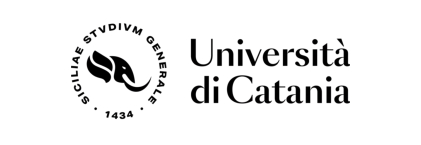



In recent years, Quadruped robots have gained increased attention in the robotics community and industry as solutions that can be used to automate tasks which, so far, have always been relegated to human workers. They can be adopted in dangerous situations where human life can be put at risk, such as rescue scenarios after earthquakes or chemical plant accidents, to perform repetitive tasks such as monitoring, and to address shortage of skilled labour. All these tasks have been scarcely automated for two main reasons. First, they can exhibit environments that are mainly designed for humans, which thereby need legs to be efficiently traversed. Second, non-structured environments require a higher level of perception and motion capability in order to quickly adapt to unexpected situations and avoid failure, which enormously complicates the control synthesis. Their superior stability compared to humanoids, given the presence of multiple legs, together with some recent developments in the quadruped locomotion research field, have so far been the main driving factors for this increased interest in four-legged machines, and nowadays multiple companies are exploring their possible adoption in different applications.
The goal of this workshop is to bring together the Italian research community working with quadruped robots, that has recently reached a critical mass, making it important to organize a dedicated workshop.
Claudio Semini - PI and head of the Dynamic Legged Systems Lab, Istituto Italiano di Tecnologia (IIT), Genoa
14:35-14:50
Abstract - In this talk I will present an overview of 16 years of research and development of quadruped robots and their locomotion control at IIT's Dynamic Legged Systems lab. After a quick chronological overview of the various quadruped robot versions developed in the lab, I will focus on the most recent 140kg hydraulic HyQReal robot, followed by the presentation of three ongoing/recent projects in the fields of agriculture, disaster response and space. The VINUM project focuses on the automation of winter pruning in vineyards with quadruped robots. The INAIL-RT2 project is about a teleoperated legged manipulation platform for disaster response. Last, my talk will take you into the field of space exploration. I will present the results of our ESA-funded project ANT about legged rovers for hard-to-access areas like craters on Moon and Mars.
Manolo Garabini - Assistant Professor, Department of Information Engineering, Università di Pisa
Michele Pierallini - PhD candidate, Department of Information Engineering, Università di Pisa
14:50-15:10
Abstract - Global warming and pollution are threatening the survival of one million over the eight million species on the planet. The European answer to these threats is contained in the European Green Deal that recognizes the paramount importance of environmental monitoring, which today is entirely executed by human operator. Natural Intelligence is the first research project in which quadruped robots have been used to perform environmental monitoring missions in Dunes, Grasslands, Screes, and Forests. This research line has not only demonstrated that quadruped may navigate natural environments but highlighted the potential benefit of multi-modal robots provided with legs and wheels, trucks, omniwheels, and manipulators.
Michele Focchi - Researcher, Department of Information Engineering and Computer Science, Università di Trento
15:10-15:30
Abstract - Legged robots are mainly designed to traverse unstructured environments where wheeled robots have limited mobility. Their applications range from nuclear decommissioning to mining, search and rescue, inspection, and surveillance. There are specific situations where obstacles are much higher than the size of the robot leg. These obstacles cannot be crossed with usual state-of-the-art gaits (e.g. trot/walk) and require performing very dynamic motions (i.e. a jump). Aerial motions involve different phases (i.e. thrusting, ballistic, landing). In this talk, I will present two planning strategies for jumping and landing. The first employs Reinforcement Learning (RL) to generate optimal jumping onmi-directional motions where the learning process is guided by injecting physical knowledge. This expedient resulted in a drastic reduction of the learning time with respect to standard end-to-end approaches. The second strategy, regarding landing, is a model-based reactive planner that continuously recomputes the foothold locations in order to make the robot come to a stop without re-bouncing.
Fabio Ruggiero - Associate Professor, Department of Electrical Engineering and Information Technology, Università degli Studi di Napoli Federico II
15:30-15:50
Abstract - This talk will explore the possible exploitation of quadruped robots in agriculture applications. How to face the stability problem on harsh terrain, cutting the grapevines, and drilling silage walls will be presented. Finally, some mechatronic development carried out at PRISMA Lab for constructing a small-legged robot will be presented.
Antonio Sgorbissa - Associate Professor, Department of Informatic, Bioengineering, Robotics and System engineering, Università di Genova
15:50-16:10
Abstract - In recent years, the possibility of using quadruped robots as support for search and rescue operations in emergency situations has emerged as a concrete possibility. This requires close collaboration with operators in order to gather their needs and their vision of how robots can assist them. The talk will narrate our experience in the development of autonomous quadruped robots, acquiring valuable information from ANPAS and Civil Protection volunteers, as well as some possible research paths to address the challenges posed by their requirements.
Paolo Arena with Alessia Li Noce, Luca Patanè - Università degli Studi di Catania
16:10-16:25
Abstract - Neural architectures are recognised as powerful tools capable of efficiently face with a large plethora of problems, ranging from the approximation of complex nonlinear dynamics using a data-driven strategy, to the reproduction of phase-locked periodic dynamics representing gaits in legged robots. This latter approach has been followed since the late 1990s to implement locomotion models in legged prototypes, mainly hexapods. Recently, research in our group has moved on to quadrupedal locomotion due to the challenging aspects related to dynamic balance. In this perspective, recent and current research has focused on exploiting the capabilities of neural controllers in achieving and maintaining balance in quadrupedal robots, particularly when subjected to load disturbances or when standing on two legs.
16:25